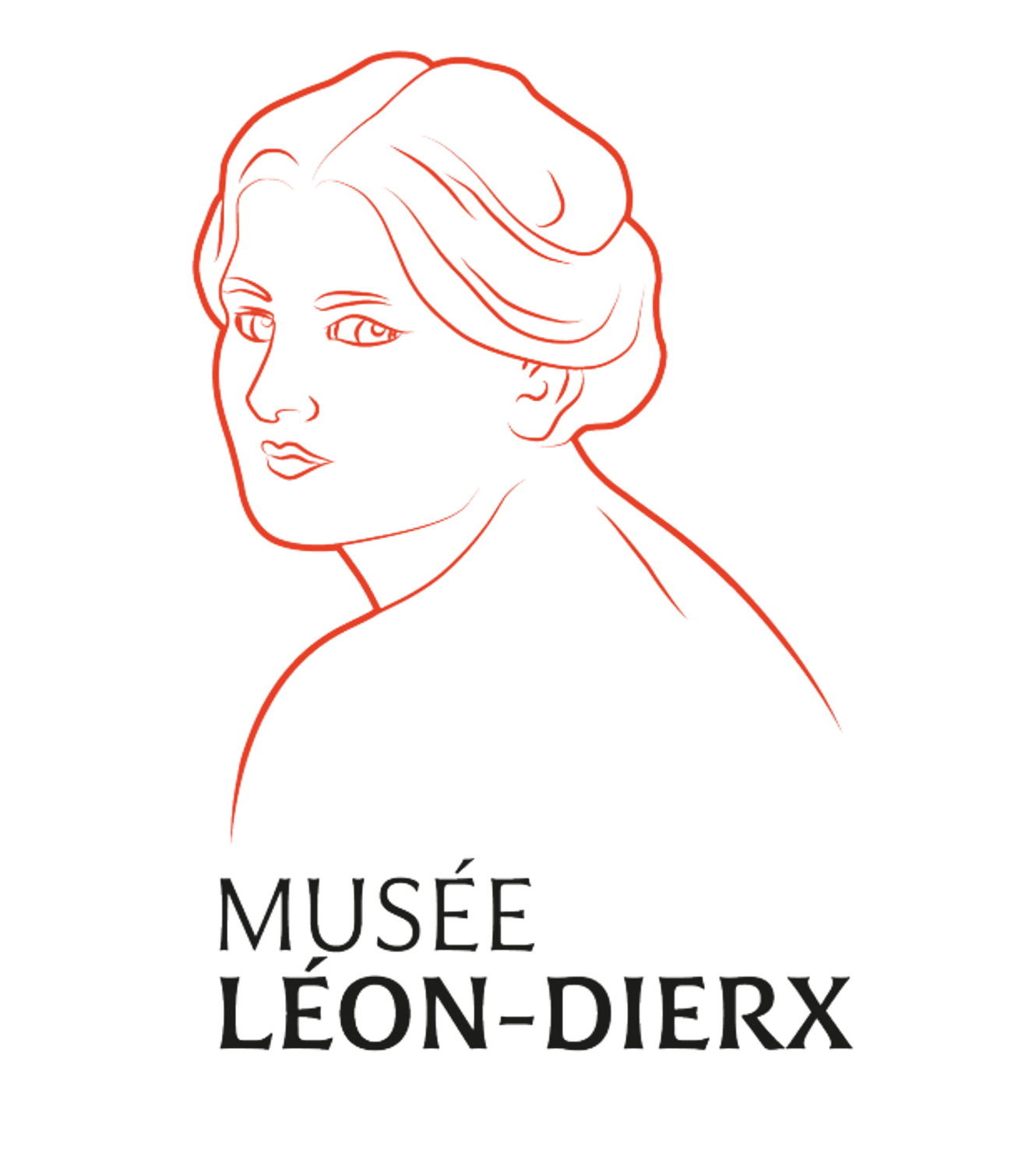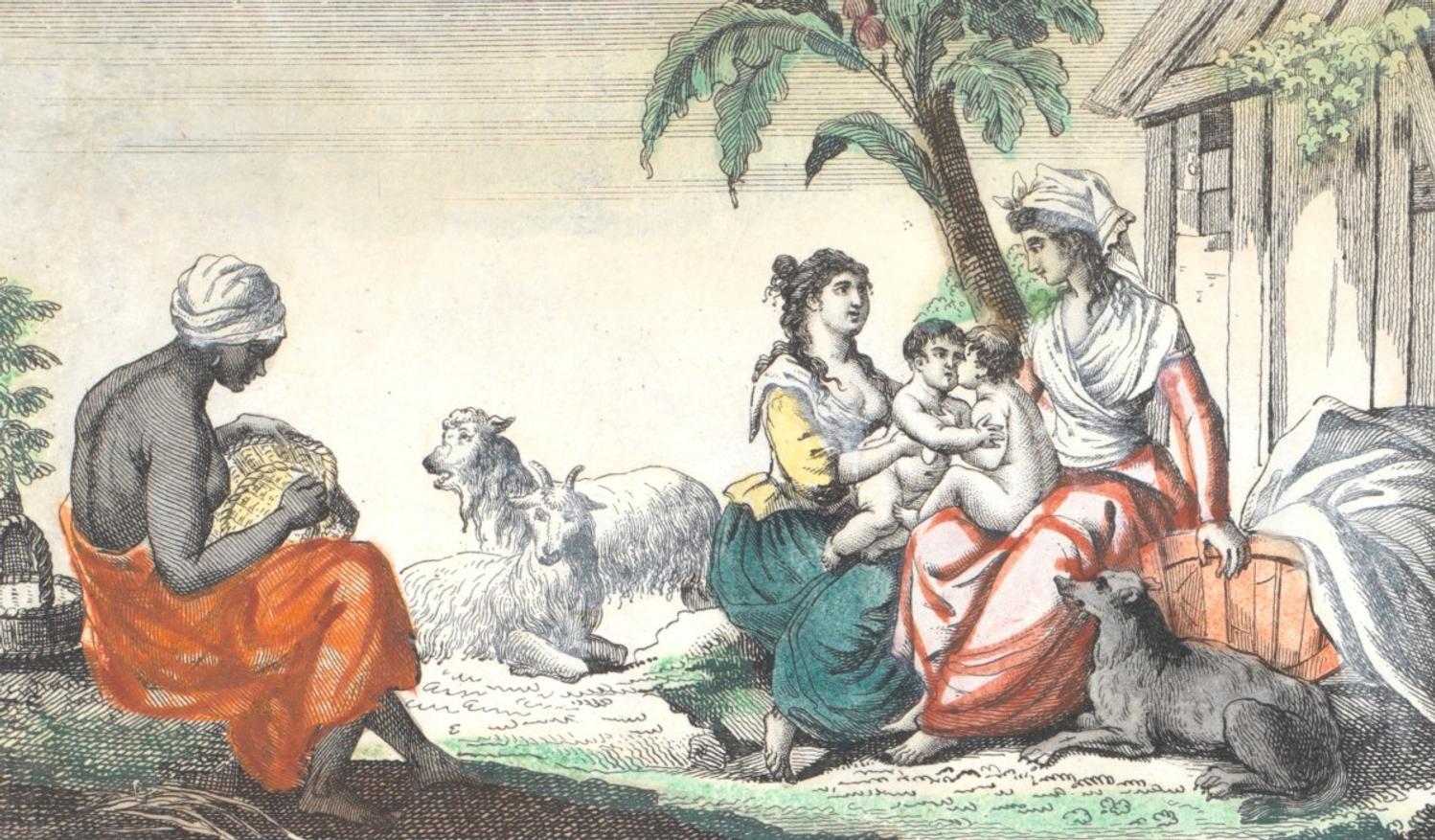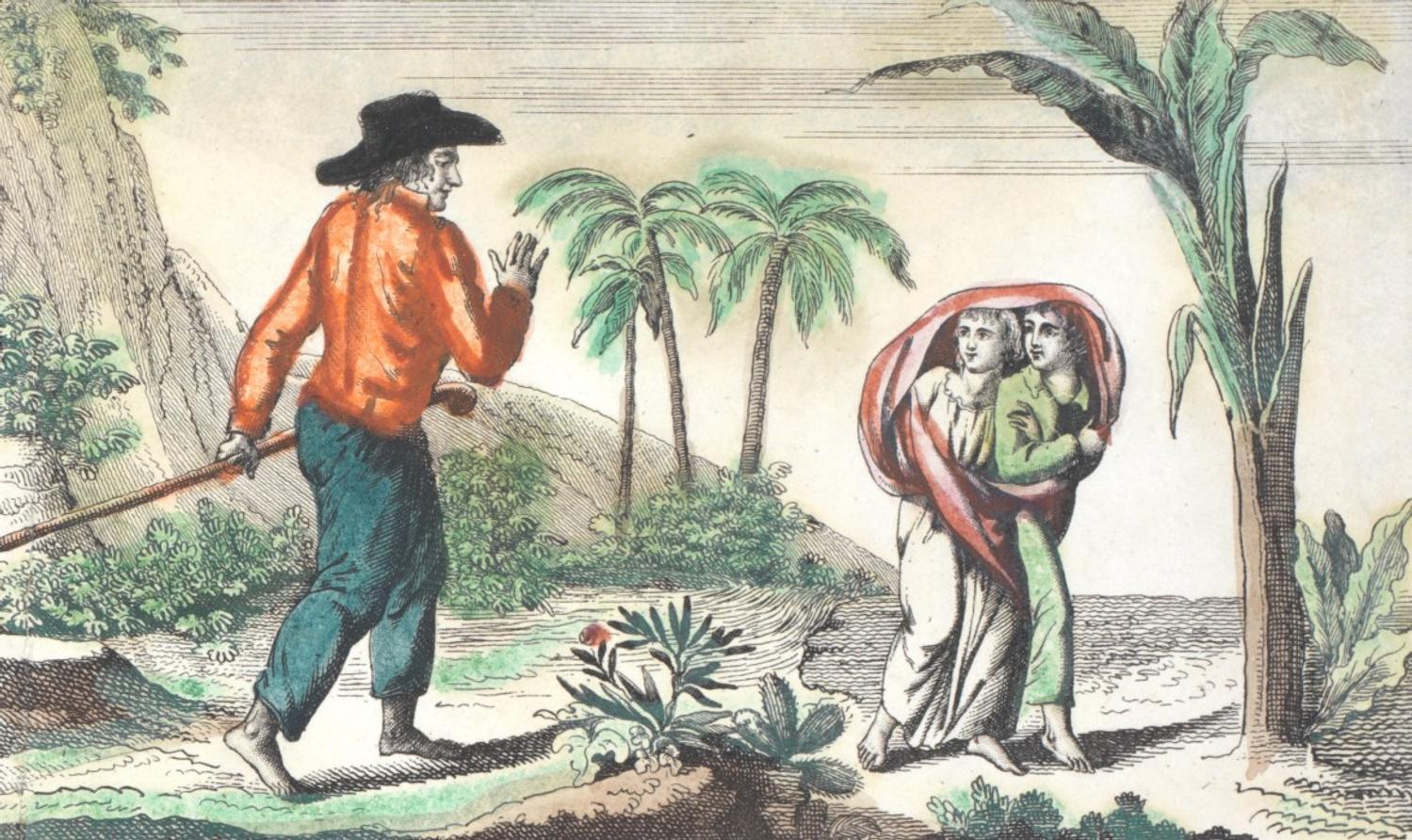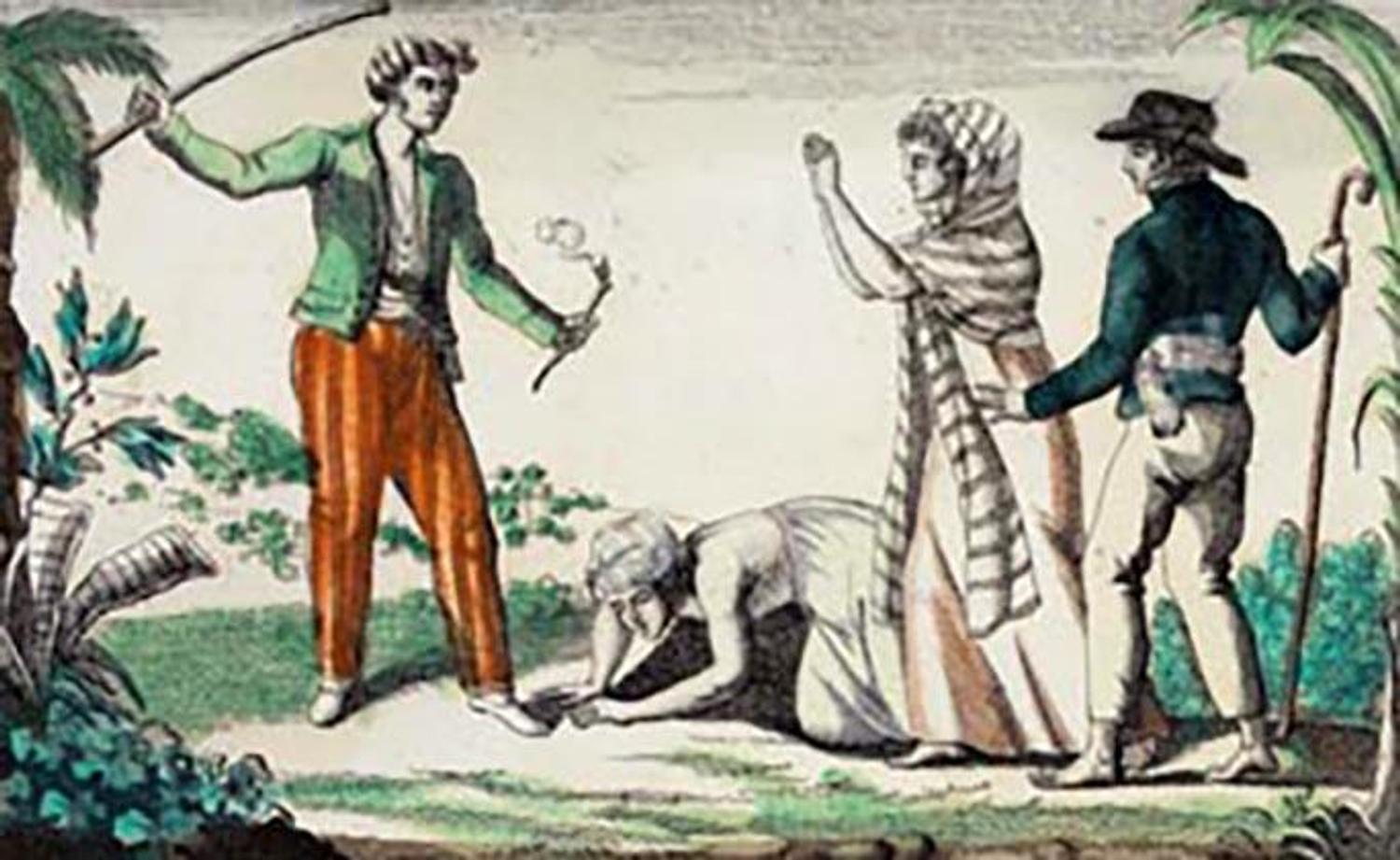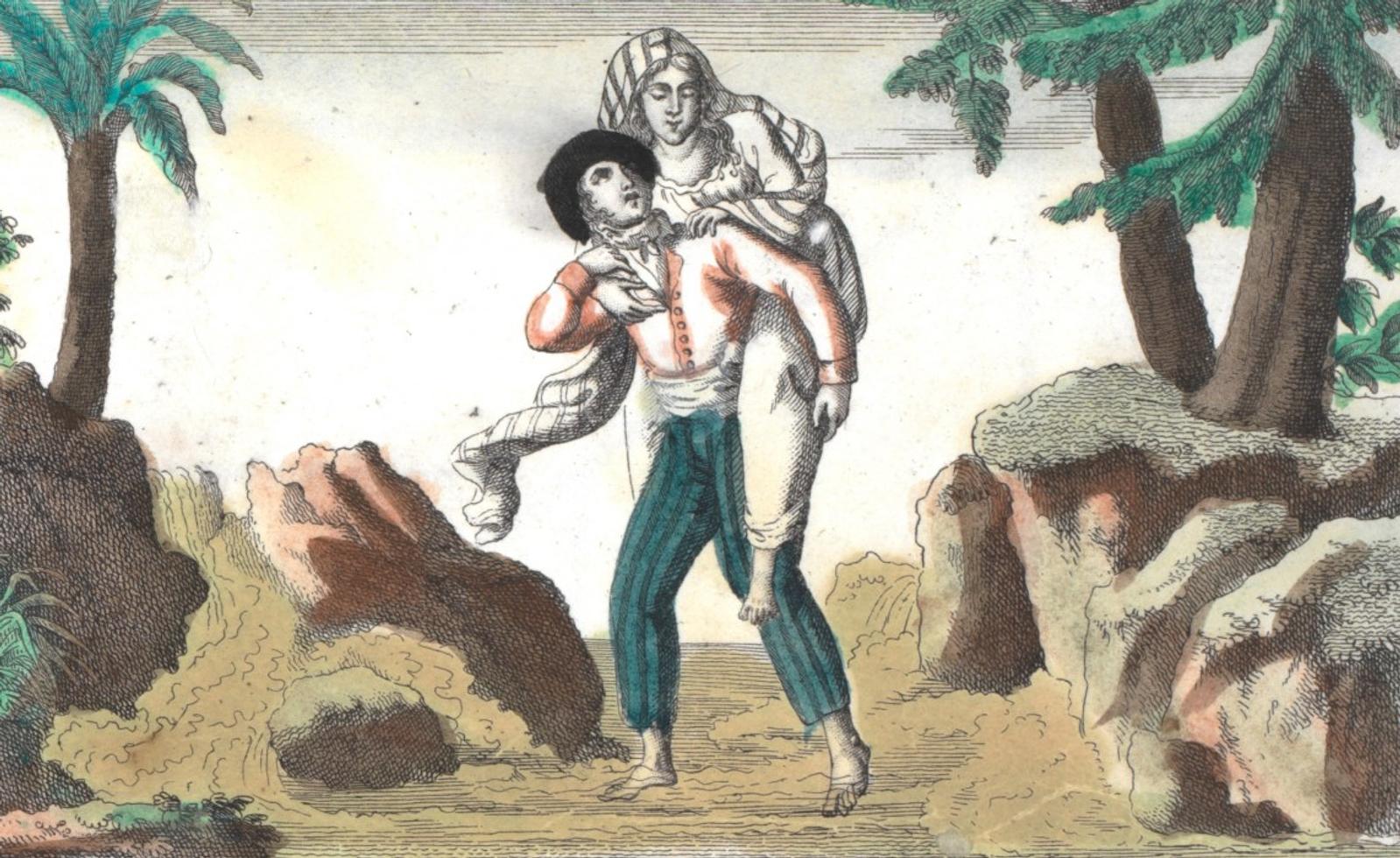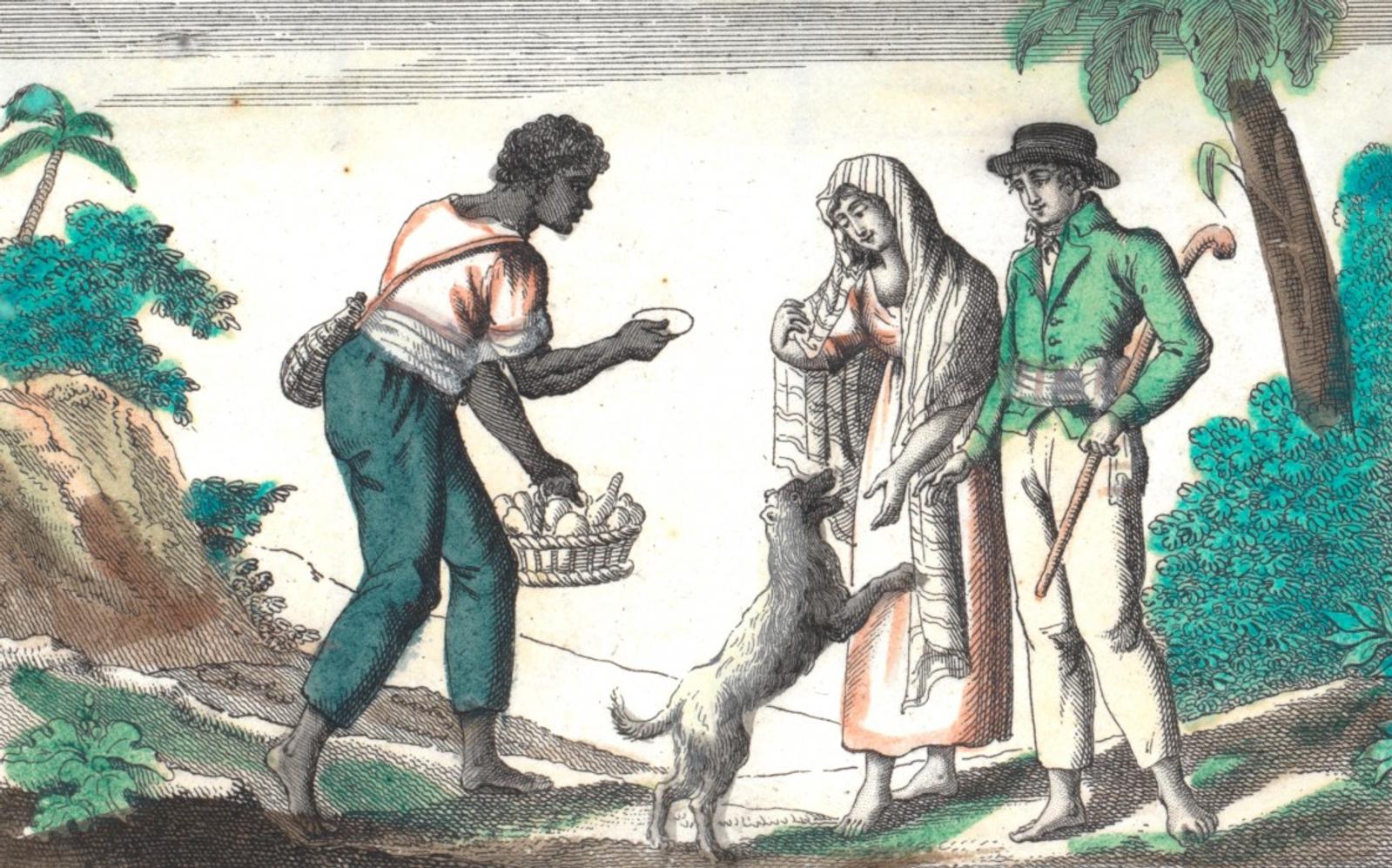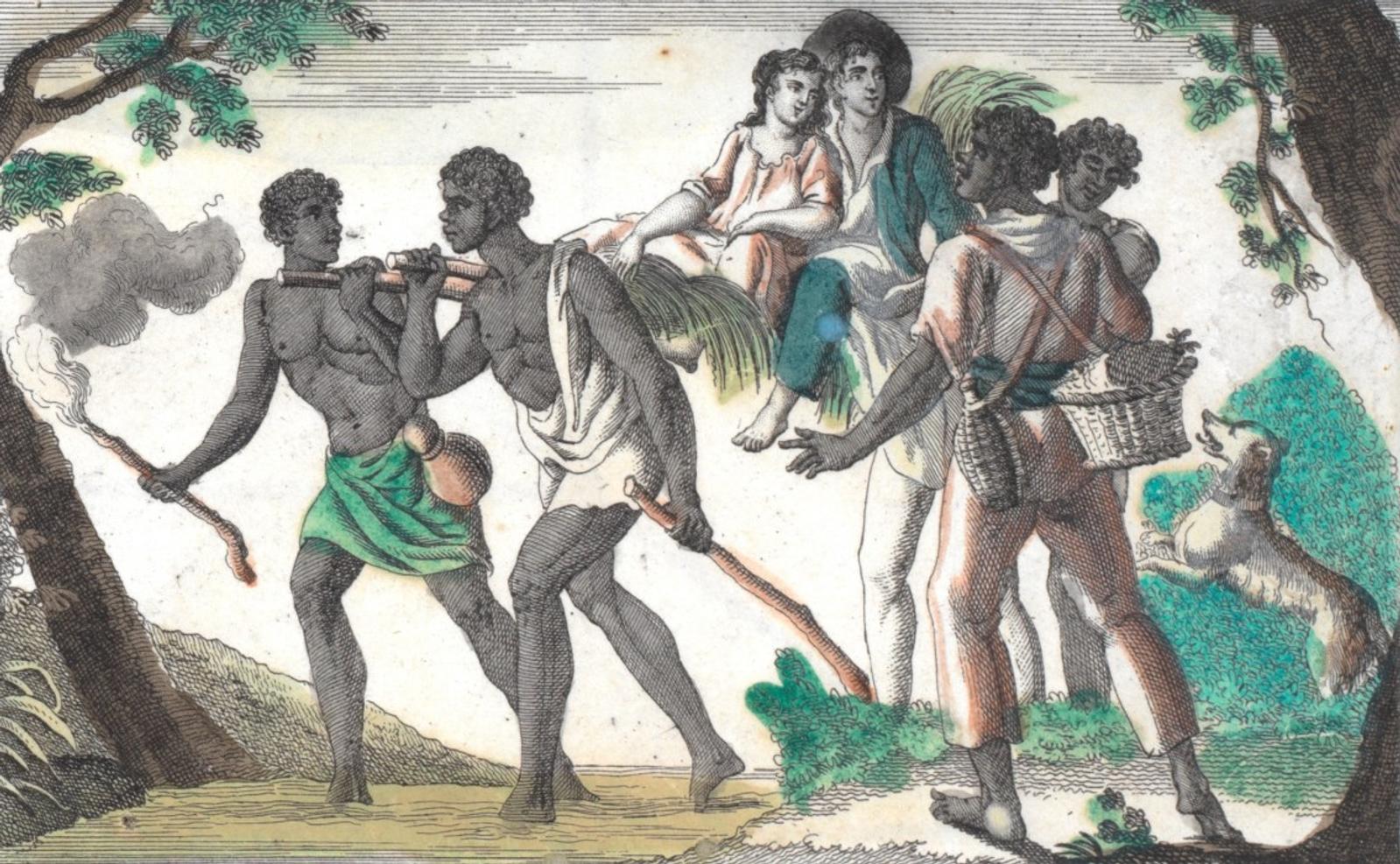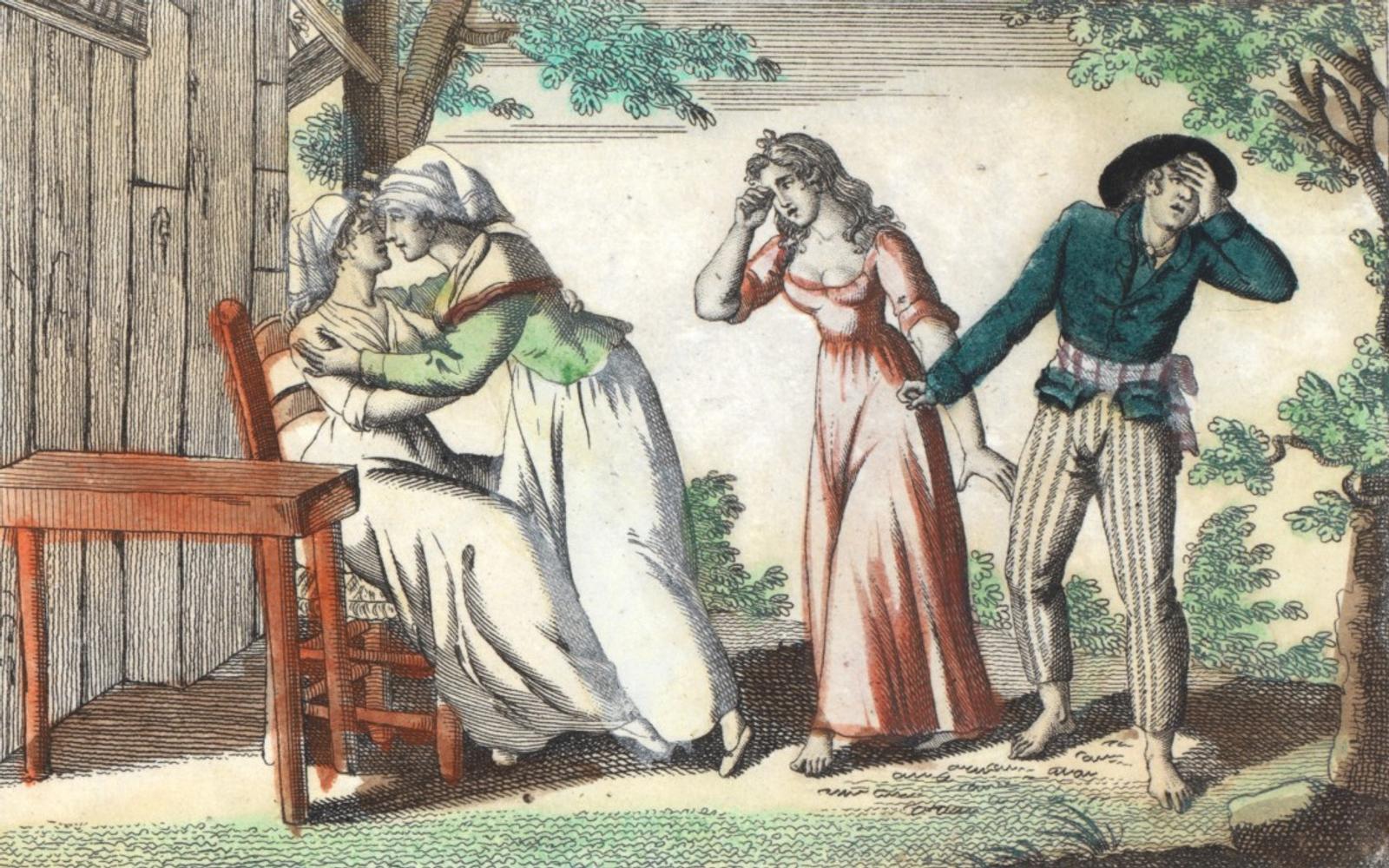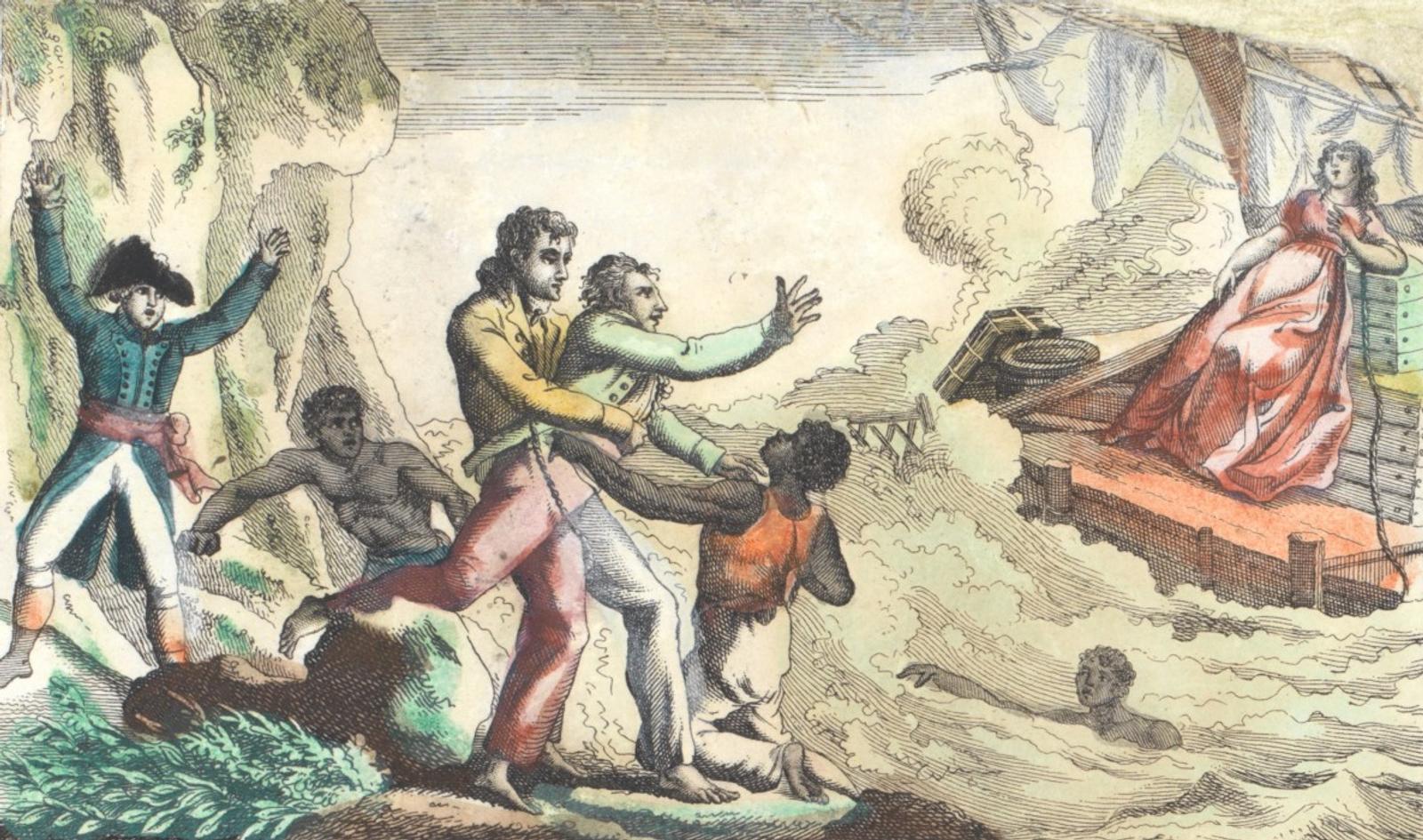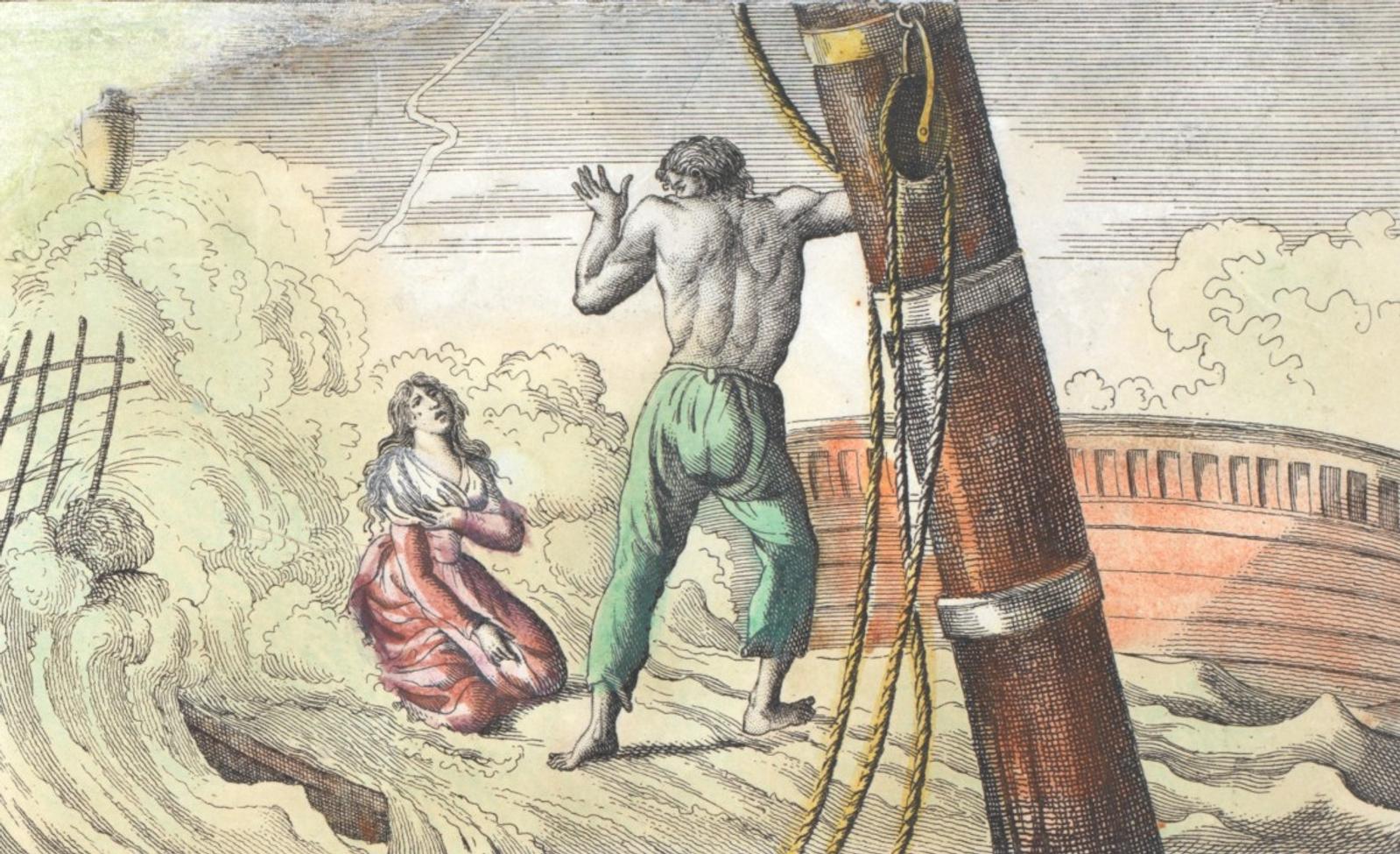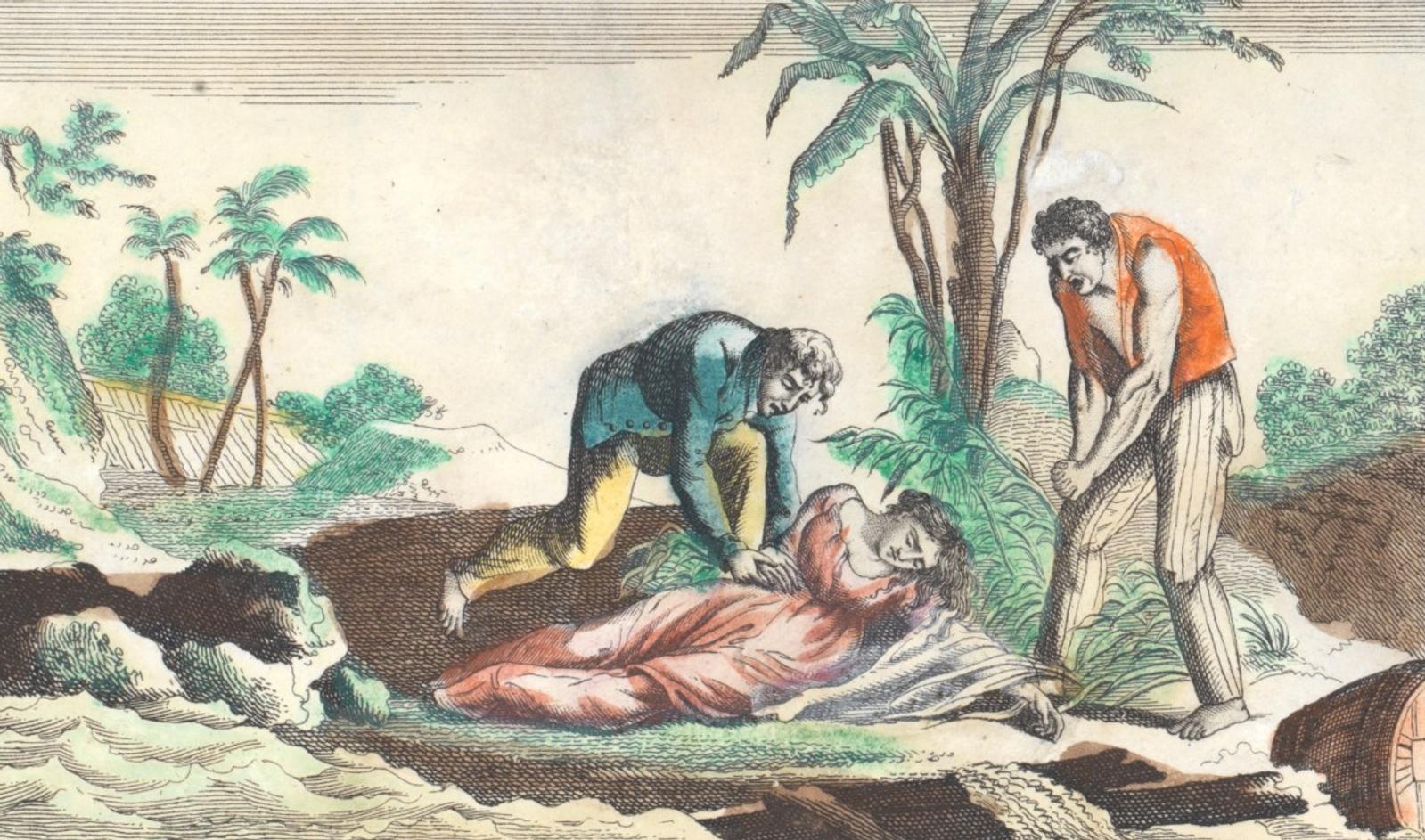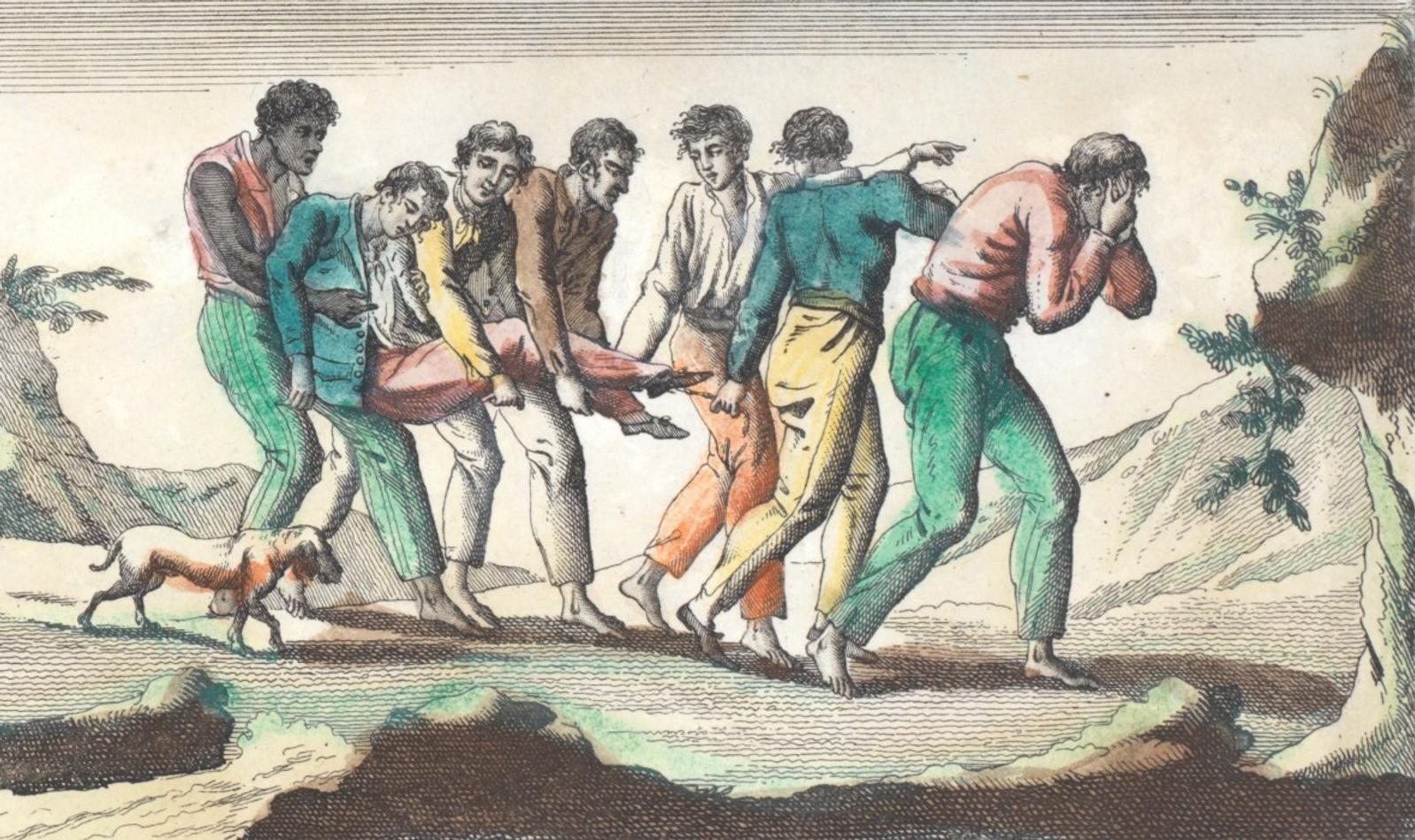PAUL AND VIRGINIA : FROM THE NOVEL TO THE IMAGES
Paul and Virginia’s childhood, around 1815-1830
Projects around the cradle
Soon after its publication, Paul and Virginia became a source of inspiration for artists. Most of the pictorial representations of Bernardin de Saint-Pierre’s novel were based on late 18thcentury and early 19thcentury models.
Five historical series of etchings or plates from illustrated editions of the novel were initially produced, all published during Bernardin de Saint-Pierre’s lifetime. Between 1789 and 1806, illustrators, painters and engravers produced the pictorial corpus, selecting episodes they considered to be the most emblematic. For over a century, these artists thus set the standards for representations of Paul and Virginia.
During their childhood, Paul and Virginia are brought up as brother and sister, sharing the intimate aspects of their lives. Marguerite, Paul’s mother, and Mme de La Tour, Virginia’s mother, breast-feed them. They play, swim and sleep together. Standing around their cradle, their mothers already hope they will be married. For the artists, the cradle symbolised the harmony reigning at the opening of the novel. First illustrated in the Schall/Legrand series in 1791, throughout the 19th century, it became the object of a number of interpretations.
Paul and Virginia’s adolescence, around 1815-1830
A petticoat umbrella
The most famous illustration of Paul and Virginia’s early years remains that of the petticoat umbrella represented on the frontispiece of the first illustrated edition in 1789. After the 1870s, the petticoat was sometimes represented as a banana leaf, a more exotic element for European readers.
Virginia obtaining pardon for the slave and leading him away, around 1815-1830
Grace for the slave
The novel denounces slavery: the episode when Virginie asks for the runaway slave to be pardoned was very quickly seized on by illustrators and engravers. In 1789, Moreau Le Jeune included it in his first illustrated edition. In 1795, it was included in the famous Schall-Descourtis series.
Paul takes Virginia on his shoulders to cross a deep river(1), Domingue finds his young masters and gives them fruit (2), The triumph of virtue (3), around 1815-1830
Lost then found
Frightened and fleeing from the owner of the runaway slave, Paul and Virginia lose their way while coming home to their huts. They wander through mountains and lush green tropical forest, generous but threatening. The adolescents, hungry and despairing, call out for help and pray that they will be found. Domingue and the dog Fidèle eventually find them and that they are carried home by four runaway slaves. These dramatic events against the backdrop of the grandiose natural environment served as inspiration for artists who retained three key scenes: stepping over the torrent, Domingue finding the children and Paul et Virginia’s homecoming.
The complicity of childhood between the two children little by little turns into a passionate love affair. But Virginia’s aunt calls her to France to be educated and inherit her fortune. The planned departure prefigures the end of their happy days together.
Mahé de La Bourdonnais comes to the hut to announce Virginia’s departure for France (1), After reading the letter handed over by Mé de La Bourdonnais, Marguerite embraces Mme de la Tour, saying to her, “Dear friend, dear friend”(2), Paul gives Virginia a portrait and vows his eternal love for her (3), around 1815-1830
A painful separation
Bernardin de Saint-Pierre admired the governor Mahe de La Bourdonnais. Of his stay in the Île de France, collective memory has retained his works aimed at developing the colony. History has a role to play in the novel, with the governor as one of the characters. He is the one who delivers to Mme de La tour the letter announcing Virginia’s departure.
Virginia sees her departure as a mission, a duty towards her family, a ray of hope for her mother Marguerite and a better future for Paul, thanks to her aunt’s fortune. For the last time, she and Paul talk together and she declares her love for him.
In the novel, Paul is not present at Virginia’s night-time departure. He is told by Marie that she has left and rushes down to the port to see the boat sailing away. Early 19thcentury artists depicted him holding her in his arms, then having to be separated from her, adding extra drama to the scene.
The shipwreck of Virginia’s vessel (1), Virginia in her tomb (2), Death of Virginia (3), Paul being taken out of the sea (4), around 1815-1830
A painful separation
Bernardin de Saint-Pierre admired the governor Mahe de La Bourdonnais. Of his stay in the Île de France, collective memory has retained his works aimed at developing the colony. History has a role to play in the novel, with the governor as one of the characters. He is the one who delivers to Mme de La tour the letter announcing Virginia’s departure.
Virginia sees her departure as a mission, a duty towards her family, a ray of hope for her mother Marguerite and a better future for Paul, thanks to her aunt’s fortune. For the last time, she and Paul talk together and she declares her love for him.
In the novel, Paul is not present at Virginia’s night-time departure. He is told by Marie that she has left and rushes down to the port to see the boat sailing away. Early 19thcentury artists depicted him holding her in his arms, then having to be separated from her, adding extra drama to the scene.
